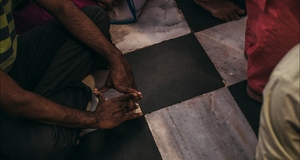From the Field:Rural-Urban Migration and Agricultural Transformation in India: Observing the Impact on Childhood Migration From Bihar to New DelhiIn Sitamarhi district, a sugarcane processing plant dominated the land, contributing to the monoculturization17 of sugarcane in the surrounding villages. Farmers would dedicate large portions of their fields to this labor intensive crop due to the demand from the factory. This industrial development was part of the beginnings of neoliberalism during the 1990s. The policy opened up the country to new development projects, allowing private foreign and domestic companies to start production in many of these former agricultural lands. However, unlike the states of Jharkhand and Orissa, which benefited from their rich deposits of lumber and coal18, Bihar was largely left alone from industrial development. The state was known for its fertile agricultural land, rather than its natural resources, meaning industrial development was not a primary interest for the Indian government. This left Bihari citizens with crucial decisions to make. If there are no opportunities to work on the land, no impetus by the government to aid in an egalitarian development model, then an uneven model will emerge. People will be forced to migrate to these pockets of development in Jharkhand and Orissa, leaving their homeland behind. This uneven model is unsustainable and highly damaging. As Indu Prakash states: The entire development paradigm, the way it unfolds in the country, I think it’s been faulted for the people themselves, because people will go where their work is. If you just want to reverse it, you start having some of these things in the rural sector, if the rural sector becomes economically viable, you know, why would you go back? For rural Biharis who lack opportunities on their land or on the fields of large landowners, it may be more feasible to go out and find a more consistent job. For the youth in Bihar, there is a compulsion to follow this paradigm. Working in the fields is not only unviable, but it is unattractive as a job. Many teenagers expressed to me how they would prefer to have a job working in the city, rather than being a farmer. A discussion with many young men in Amritpur revealed that the majority of them go to work in the district towns or in major urban centers because that is where they felt jobs were. They were only home to farm for a few weeks, then they would return to their urban jobs. They saw no future or possible channels of development in Amritpur, and felt farming was not a fulfilling profession anymore. They had to go to where development existed to find work.19With privatization and neoliberalism increasingly becoming a part of the Indian economy, the spread of uneven development is on the rise (Anand Kumar, 2008; Pandit, 2012). Pockets of investment are taking precedent over undeveloped regions, many of which are in Bihar, meaning jobs are being shifted out to certain concentrated development regions. An area failing to receive investment is not able to hold onto its inhabitants, meaning a migration to development pockets is inevitable (Deshingkar, 2006; Henderson, 2010). Along these channels men and children will head, searching for opportunities beyond a depressed agricultural system. At the same time, India’s development policy has reshaped how agriculture is viewed. Under the newly liberalized economic policy, agriculture has become integrated into a structure that relies on policies of investment, incentives, and innovations. This system will no longer allow the agricultural sector to strive for self-sufficiency. It is now connected to a larger world economy and without crucial investment in these Bihari agricultural zones, it reaffirms the impossibility of working and living solely on one plot of land. Adults and youth must make pivotal decisions to head to where development is being promoted and incentivized—the zones where jobs and consistent opportunities exist. Sugarcane fields in Amritpur village, Sitamarhi District  Beyond Agricultural MigrationWhile agriculture has played a crucial role in the transformations within Bihar during the last fifty years, it would be unwise to say this is the only factor contributing to a higher frequency of youth migrations. Rather, it is vital that these agricultural transformations that weave issues of landholding, mechanization, climatic changes, and development be understood as intertwining processes which interact with other socioeconomic, historical, and religious dynamics. By examining the dense linkages that tie other critical issues with agriculture, one can begin to see the extreme complexities of youth migration. In this section, I will discuss three significant topics that were reoccurring issues in my fieldwork: rural education failures, the caste system, and the perception of rural versus urban lifestyles. I. Rural Education FailuresFor the Bihar government and Chief Minister Nitish Kumar, there has been a constant pressure to improve rural education. Kumar has actually drawn praise from many critics for his first term, where he provided much need infrastructural improvements for the Bihari youth (Ghosh, 2012). In Sitamarhi district, many rural villagers expressed how the educational system has improved significantly in the last decade. The grandfather of a Bhumihar20 family in Baksampur, an upper caste landowner, informed us that “boys are all going to school now. Earlier they use to rear sheep, buffaloes, etc. but now they are getting books, clothes, cycles for free so they have started taking interest in going to school.”21 These improvements have been significant, as they have encouraged more children than in the past to attend school. Yet, the quality of education still varies greatly, meaning many children become de-motivated or uninterested in their studies, and consider leaving school altogether. A large portion of students still drop out even before they turn fourteen, the age of guaranteed education under India’s Right to Education Act (Parliament, 2012). In addition, as I mentioned earlier, the schools I visited, with the exception of one, tended to be chaotic, understaffed, and unsurprisingly lacking much structure. Teachers were rarely teaching, students lacked appropriate books and materials, and the buildings were typically unsuitable as educational facilities. Many students failed to stay the entire day, while others came in late after helping their parents at home or in the fields. This is quite similar to Sainath’s description of Bihar schools some thirty years earlier in Everybody Loves a Good Drought, where many schools lacked appropriate facilities, qualified teachers, and attendance was very inconsistent (Sainath, 1996b). The rural education system in Bihar, despite making strides under Chief Minister Kumar, have failed to reach the standards in urban centers of Delhi and Mumbai, where primary education tends to be significantly better. As a result, many children and their parents fail to see the value of an education versus that of obtaining a job in Bihar. They will, instead, work to provide for the family or go to the cities to find better opportunities. The lack of a supporting educational structure sets the foundation (or lack thereof) for an unstable rural livelihood, pushing children towards the cities in search of better opportunities. II. Issues of CasteIn rural Bihar, issues of caste are still very prevalent, producing systems that limit access for many marginalized groups. Historically, the zamindari system has left many lower caste families with little to no land, even after abolition in 1948. This has made many lower caste families dependent on higher caste landowners for work, food, and ultimately their livelihoods. In addition, they still must face the intense discrimination of being lower caste. Hoja, the Chamar caste girl who was our guide in Baksampur, faced direct discrimination from the Bhumihar family I interviewed. Hoja was forced to stand at the periphery of the conversation, exposed to the sun outside the cover of the porch. Feet away, sitting comfortably, members of the Bhumihar family discussed the practices of untouchability they continue to follow: Mother: even we practice it, if someone is a Chamar- belonging to lower caste, they cannot sit everywhere; they have to sit in a particular place made for them This conversation, while effective in capturing some examples of caste discrimination in Baksampur, fails to reveal the full extent of persecution and marginalization of lower caste people in Bihar. For lower caste adults who try to escape persecution in their village by attempting to start a business in a district town, they still face discrimination. Many times higher caste individuals from their village will come into town and reveal the shop owner’s status to the public, essentially ruining any future business. At some schools, lower caste children are forced to sit on the floor, while upper caste youth are given chairs. Additionally, teachers will give upper caste children preferential treatment, despite stipulations against these actions in India’s education acts. This treatment is very significant when discussing youth migration to urban centers. In Delhi, while casteism still does exist, and can be observed across socioeconomic lines, it is practiced much less. Caste is less of an issue in the city of migrants, where many children can hide their status. On the railways, at temples, schools, and in homeless shelters, caste is less significant, allowing for a greater chance of social mobility and escape from caste-based marginalization. Children have more access and azadi (freedom) in the city, and are not defined by caste the way they are in rural regions of Bihar.Continued on Next Page » Suggested Reading from Inquiries Journal
Inquiries Journal provides undergraduate and graduate students around the world a platform for the wide dissemination of academic work over a range of core disciplines. Representing the work of students from hundreds of institutions around the globe, Inquiries Journal's large database of academic articles is completely free. Learn more | Blog | Submit Latest in Anthropology |














